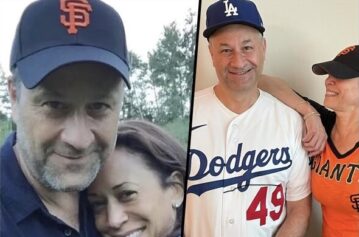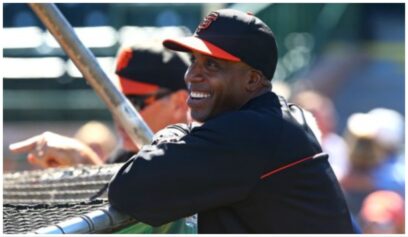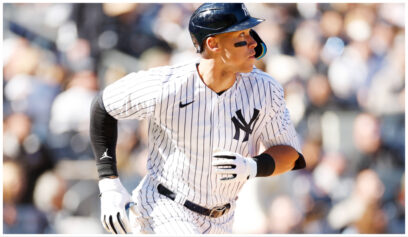With three World Series titles in five years, it’s safe to say the San Francisco Giants are MLB’s first post-PED Era dynasty.
The Giants 3-2 win over the more than game Kansas City Kids in Game 7 of the 2014 WS on Wednesday, capped a seven-game showdown for the ages, reinvigorated baseball in the Midwest and re-ignited hope in baseball purists that the game they love has returned.
As the stench of the PED Era slowly dissipates and is buried and burned under the stadiums which fed this mutated brand of baseball, the familiar aroma of a more authentic brand of balling has penetrated the senses and brought some credibility back to the game.
While this World Series will probably be forgotten quicker than Madison Bumgarner’s last name—and the ratings were trash as I predicted in my TSL WS Wil’ Out preview—from a pure baseball perspective, it was historical, revealing and a mirror image of what baseball was before PEDS changed the game.
The style of play is what carried this WS to the modest national recognition and social media burn it did get. The execution on defense was almost flawless (until that ninth inning of Game 7 when Alex Gordon stood 90 feet away as the tying run, facing the greatest WS pitcher any non-senior citizen has ever seen). The games were exciting, the homers were timely, the pitching was classic and hustle hard was the motto.
How did we get to the point where a low-ratings faceoff between a small-market and second-tier large market club has so much historical relevance beyond the numbers ?
It started with the Mitchell Report and the embarrassing dog and pony show Senate Hearings, where baseball’s icons were put through the ringer and forced to blatantly lie about their involvement with PEDs. Many fans and analysts discounted the investigation’s findings as biased and unofficial but it exposed the Steroids epidemic at its highest levels and proved that the game’s biggest stars were the main culprits.
Once that mess got all cleaned up—and new, stricter legislation was implemented to curb PED use and the last remaining superstars of the PED Era such as Manny Ramirez, Alex Rodriguez and Ryan Braun (just to name a few ) were exposed, suspended, pocket-jacked and spanked for their indiscretions –baseball’s temperature began to normalize. The inflated home run and slugging totals subsided.
To accomplish this state of equilibrium, Bud Selig was desperately and selfishly putting the kibosh on the same players who made him a legendary MLB commissioner. During these trying times, The Shadow League wrote a story on Reds outfielder Billy Hamilton, who stole a minor league-record 155 bases in 2012. We were witnessing the re-emergence of the stolen base as a weapon. No longer was baseball built on the three-run homer. Small ball was back in play and speed was reintroduced as a necessary evil when planning a winning strategy.
Not everyone shared my excitement concerning Hamilton, but I knew that his arrival was deeper than the media was making it. His totals were mind-boggling and I had no doubt he would have an impact once he hit MLB. Hamilton had a dope rookie season stealing 56 bases, despite hitting just .250. The electricity that he brought to the game was obvious.
He put the fear of Rickey Henderson in pitchers and forced teams to game plan for his legs. For a player with legendary speed to hit MLB at the same time that the league was reinventing itself was no coincidence to me. Hamilton’s arrival (along with Dee Gordon who led MLB with 60 steals) symbolized another shift in baseball’s overall philosophy and with this change; teams such as the Giants and Royals have begun asserting themselves as the future of MLB.
Teams like the New York Yankees, who once dominated with lofty payrolls, pills, celebrity pickups, PED-enhanced power-players and pitchers, have fallen in the standings and are struggling to find a new identity.
The Royals and Giants didn’t have superstars who obliterated homer records and did just as many commercials. The Barry Bonds Era in San Francisco was a media-hounded fiasco, but all of the hoopla ended years ago without a WS title.
Conversely, it’s taken San Fran three WS wins for the country to finally get to know Hunter Pence and Pablo “Panda Bear” Sandoval. KC’s popularity has also been boosted by its success this season. At the very least, the baseball cards of Lorenzo Cain, Eric Hosmer and Mike Moustakas have doubled in value.
The 2014 WS was special because it featured two teams who play baseball the way my father and grandpa remember it—the right way.
Hit-and-runs, stolen bases, pitchers duels, bunting, aggressive hitting and taking the extra base—all aspects of the game that were lost during the Era that preceded this “Return to Normalcy.”
While Kansas City led MLB in steals and throughout most of the playoffs used that advantage to bum rush teams, it was San Fran’s hustle and base savvy that allowed them to regain a lead they’d never relinquish in the fourth inning. The home run—the crack rock of the previous baseball generation—was fittingly excluded from the party.
Sandoval reached base on an infield hit and advanced to second base on a patented Hunter Pence single to center. Then big, burly Sandoval did the unthinkable and tagged up on Alex “Air Arm” Gordon and advanced to third on a Brandon Belt fly ball to left. Michael Morse finished the damage with a single off reliever Kelvin Herrera that drove in Sandoval. The roar of the orange-clad San Fran contingent, engulfed in a sea of Kauffman Stadium blue grew louder as Pence flew from first to third on Morse’s hit, which gave San Fran a 3-2 lead.
That set the stage for MadBum to do his best Randy Johnson impersonation and give his team some innings. MadBum had just thrown 117 pitches in his Game 5 shutout masterpiece. Defying all sabermetric logic and the PED Era-birthed philosophy of pitch counts and innings limits for young superstars, the tall country boy on the rise with the rubber arm on the side pitched five scoreless innings and threw 68 pitches and survived a shaky ninth. His mythical performance smashes Johnson’s 17-pitch close in the 2001 WS.
Bumgarner, who has the lowest career ERA in World Series history at 0.25, took the Giants on his back, carrying them to the title. He single-handedly made this WS all about the pitcher. He won two of the four World Series games, saved one and threw more innings this postseason than any pitcher in history. He won Game 1, pitched a shutout in Game 5 and tossed five scoreless innings in Game 7.
In the process, MadBum lowered his ERA in this World Series to 0.43, the lowest since Sandy Koufax in 1965 with the Los Angeles Dodgers. He slayed so many Dragons; the destiny-driven Royals who were 8-0 in the playoffs before running into a 6-5, 235-pound brick wall in Game 1, the belief that pitchers should be babied to preserve arm strength and the belief that baseball is better when balls are flying over the fence.
"There's no way I would take him out, manager Bruce Bochy said. Bochy’s old school state of mind, meshes well with the slew of throwback-type performers that flood San Fran’s roster. ” I just jumped on that horse and rode it."
It’s clear that for now and the near future, San Fran’s success will depend on the brilliance of baseball’s newest postseason prophet. MadBum and The Giants became the first team to win Game 7 on the road since the Pittsburgh Pirates in 1979. They also are the first National League team since the St. Louis Cardinals nearly 70 years ago to win three titles in five years.
"It's incredible what he did," added Bochy, who is a shoe-in for the HOF and deserves an equal amount of credit for navigating his team to another improbable title. "Truly, it's historic.”
It’s also indisputable that with the retirement of Derek Jeter and the San Francisco Giants’ latest title run, Bochy’s Baseball Bunch has put the accomplishments of Jeter’s dynasty Yankees (four titles in five years from 1996-2000) in baseball’s rearview mirror, and offer the fans a MLB future that’s unblemished yet as captivating as its past.



